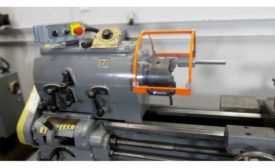Home » accident prevention
Articles Tagged with ''accident prevention''
Will new trucking rule reduce crashes or burden small businesses?
(Or both)
January 26, 2018
A FairWarning story
California and 5 other states get best ratings for highway safety laws
January 23, 2018
Never miss the latest news and trends driving the safety industry
eNewsletter | Website | eMagazine
JOIN TODAYCopyright ©2024. All Rights Reserved BNP Media.
Design, CMS, Hosting & Web Development :: ePublishing









